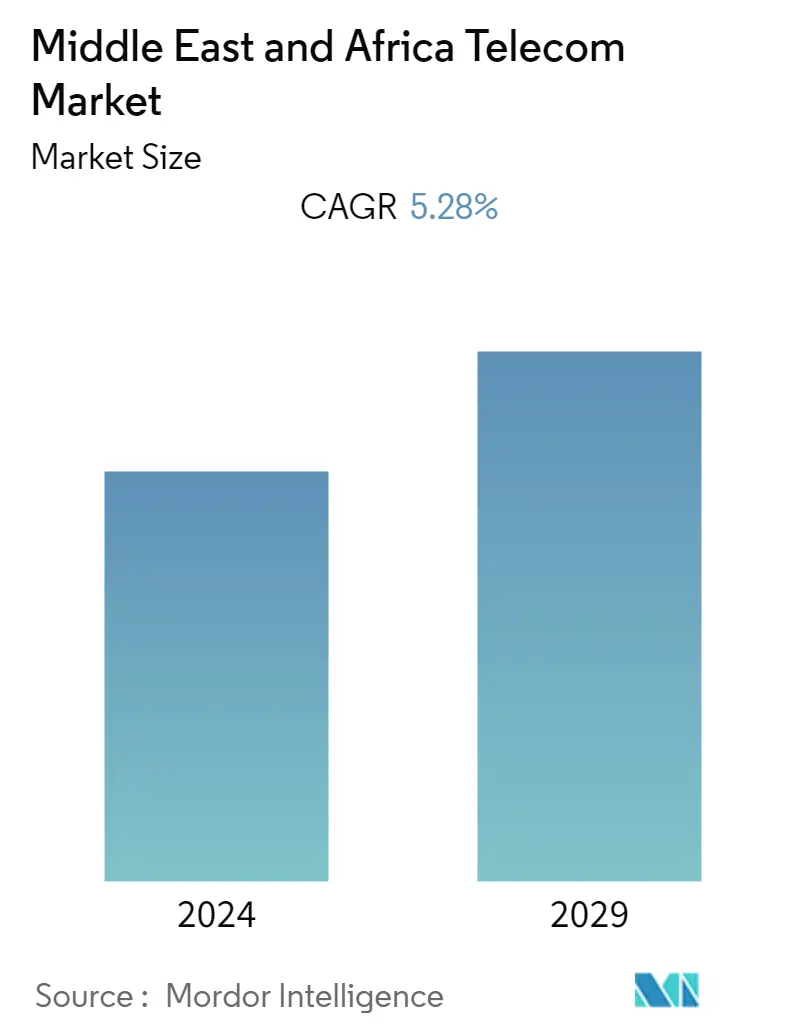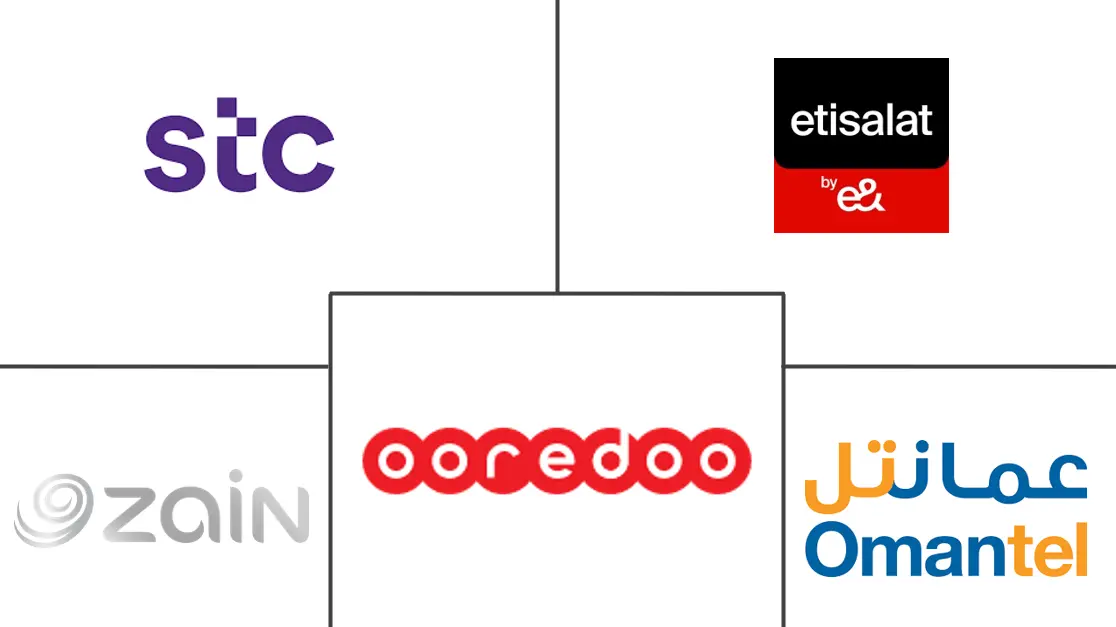Market Size of Middle East and Africa Telecom Industry

| Study Period | 2019 - 2029 |
| Base Year For Estimation | 2023 |
| Forecast Data Period | 2024 - 2029 |
| Historical Data Period | 2019 - 2022 |
| CAGR | 5.28 % |
| Market Concentration | Medium |
Major Players
*Disclaimer: Major Players sorted in no particular order |
Need a report that reflects how COVID-19 has impacted this market and its growth?
MEA Telecom Market Analysis
The Middle East and Africa telecom market is anticipated to expand at a CAGR of 5.28% during the forecast period. The use of telecom services like Saudi Telecom Company, Etisalat Group, Ooredoo Group, Zain Group, Oman Telecommunications Company, etc., by businesses and services nationwide is progressing quickly.
- The previous 25 years have seen a revolution in telecommunications, from the Middle East has benefitted from active participation. With the exception of Lebanon, Syria, and a few other nations whose reforms were only cosmetic, the majority of the countries in the region have liberalized their telecom businesses since 2000 and put them on a path of steady, dynamic growth. Even though some states hold substantial telecom shares, they have increased competition, set up efficient regulatory bodies, and moved investment to the private sector.
- The Middle East is not an exception to the fact that mobile communications are the technology that has spread the quickest in historical records. According to GSMA reports, It has 400 million unique mobile users after 25 years, of whom 280 million started using mobile internet. The mobile ecosystem generated almost 640,000 indirect employment within the same period and 360,000 direct ones in the area.
- The main factors driving market growth in the region are the establishment of Mobile Virtual Network Operators (MVNO), the expansion of fiber-based networks and fixed broadband services, and the achievement of telecom sector liberalization.
- The market challenges are expected to have an impact on telecom service expenditure due to widespread job losses and the resulting reduction in disposable incomes. For instance, on May 2022, as per World Bank Report, the average rate of employment growth in the private sector in MENA nations was one percent per year, which is much less than the five percent average among middle-income peers. In addition to the high young unemployment rate, which is projected to be 26 percent, female labor force participation, at 20 percent, is the lowest in the world.
- The Middle East's telecom sector has changed significantly over the past few years due to several phenomena. One of them is COVID epidemic of the past two years did not considerably affect telecom revenues (a decrease of less than 1 percent). Still, it highlighted the telecom networks' robustness and adaptability as they managed to withstand the unexpected spike in usage.
